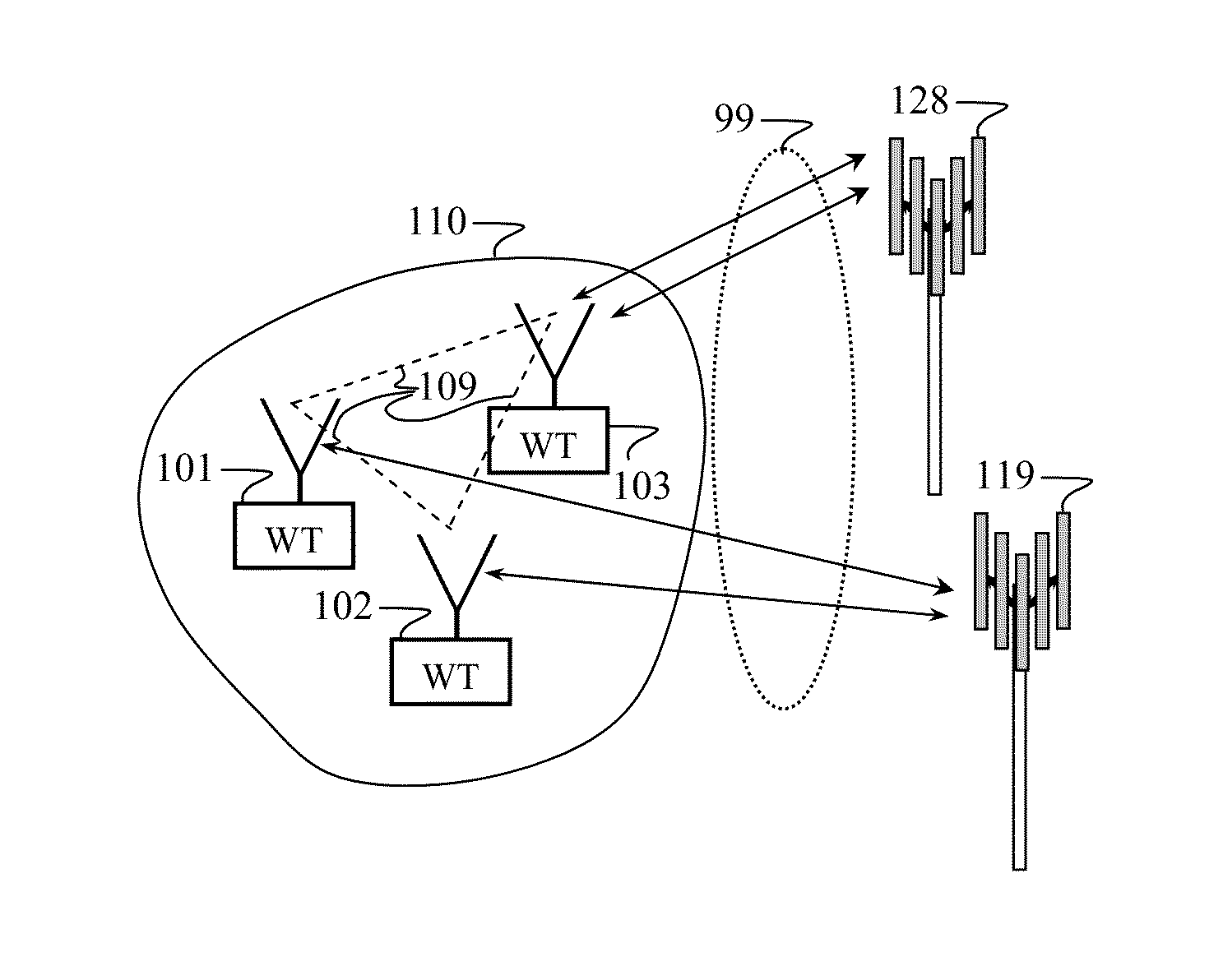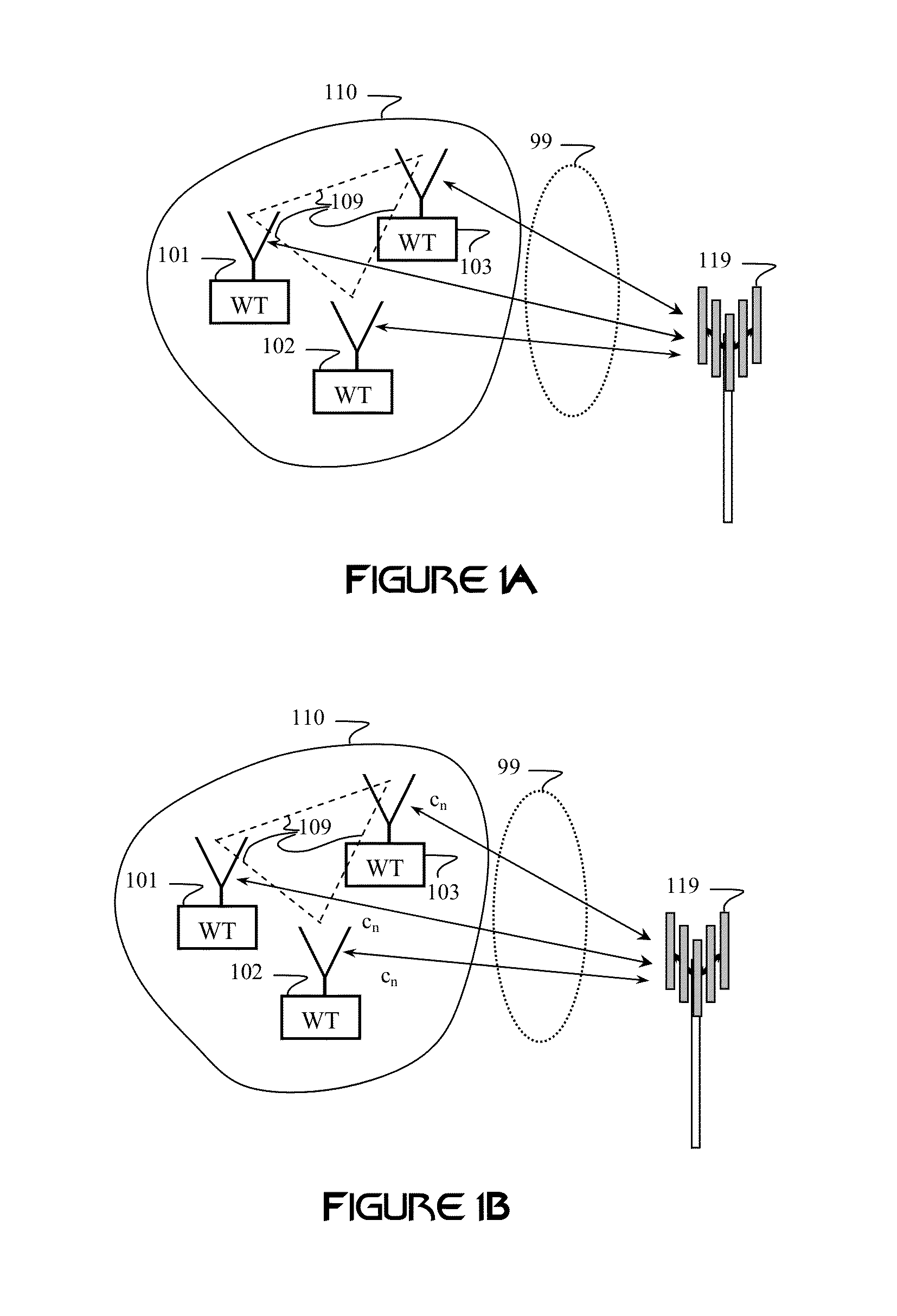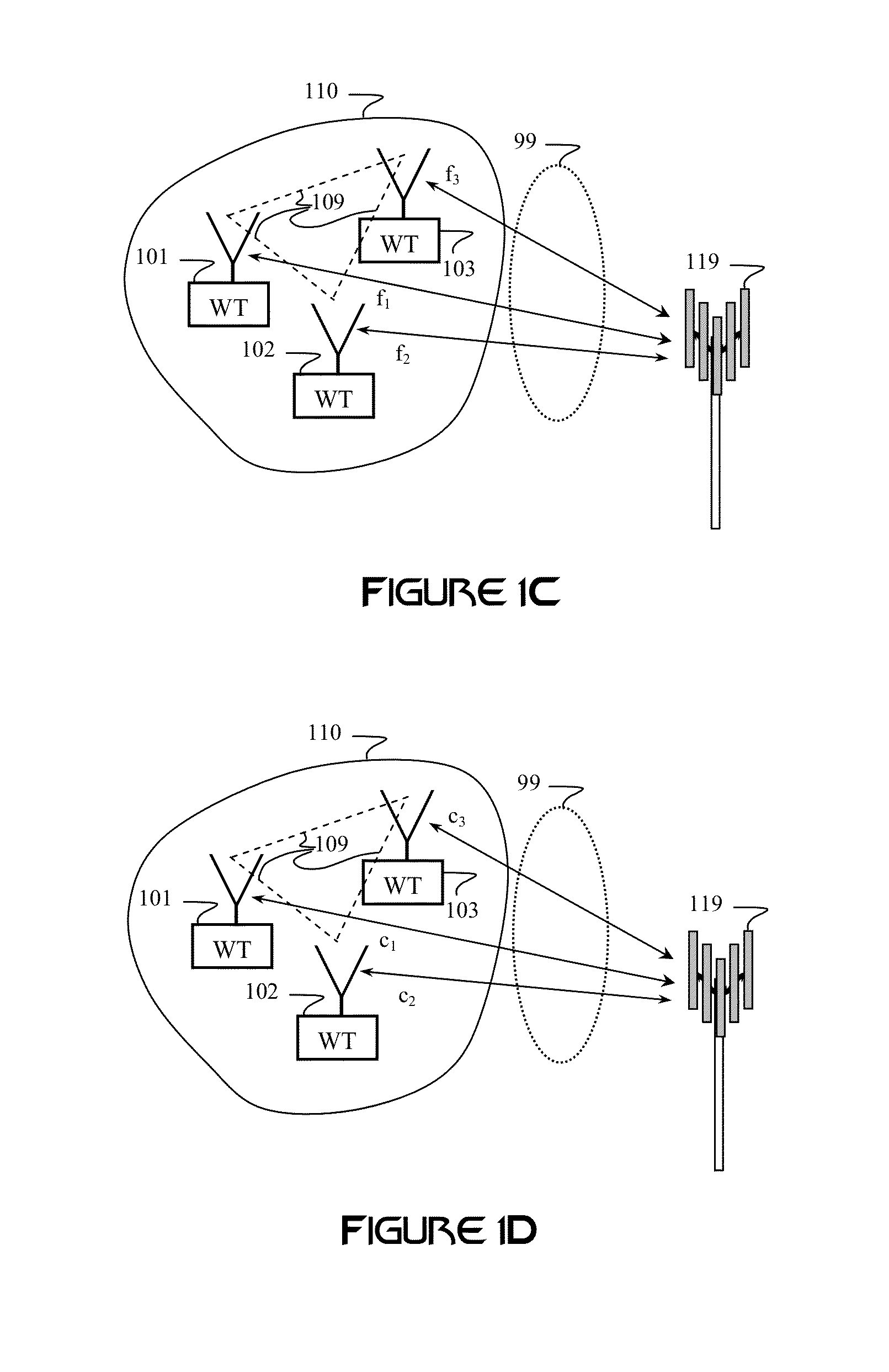Cooperative wireless networks
a wireless network and cooperative technology, applied in data switching networks, power management, site diversity, etc., can solve the problems of insufficient spatial reuse, inability to fully realize the effect of spatial reuse, and inability to translate into greater throughpu
- Summary
- Abstract
- Description
- Claims
- Application Information
AI Technical Summary
Benefits of technology
Problems solved by technology
Method used
Image
Examples
Embodiment Construction
I. Glossary
[0058]Channel state information (CSI) in wireless communications refers to measured and / or estimated channel properties of a communication link. This information describes how a signal is distorted when it propagates from a transmitter to a receiver, which is typically due to the combined effects of, for example, scattering, fading, and power decay with distance. CSI may comprise information about current channel conditions. CSI may comprise a statistical characterization of the channel and may include information about spatial correlation.
[0059]Orthogonal Frequency Division Multiplexing (OFDM) is a frequency-division multiplexing scheme used for digital multi-carrier modulation. A plurality of orthogonal sub-carrier signals, or “tones,” are used to carry data. Typically, a cyclic prefix or guard interval is used. Each subcarrier is modulated with a modulation scheme (such as quadrature amplitude modulation or phase-shift key modulation), which may comprise coding and / or ...
PUM
 Login to View More
Login to View More Abstract
Description
Claims
Application Information
 Login to View More
Login to View More - R&D
- Intellectual Property
- Life Sciences
- Materials
- Tech Scout
- Unparalleled Data Quality
- Higher Quality Content
- 60% Fewer Hallucinations
Browse by: Latest US Patents, China's latest patents, Technical Efficacy Thesaurus, Application Domain, Technology Topic, Popular Technical Reports.
© 2025 PatSnap. All rights reserved.Legal|Privacy policy|Modern Slavery Act Transparency Statement|Sitemap|About US| Contact US: help@patsnap.com



